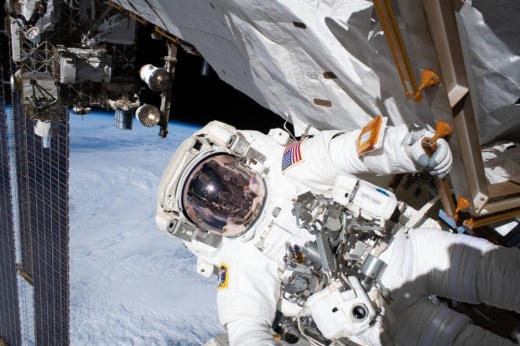Bridenstine was the keynote speaker for the inaugural State of Space, hosted by the Greater Houston Partnership on Dec. 15. Bridenstine spoke about what NASA and the Johnson Space Center are working on.
Bridenstine said NASA is thankful for Houston, which has several universities that contribute to the pipeline of scientists and engineers the Johnson Space Center needs to continue NASA’s mission.
“We are very fortunate to have a center like Johnson in a city like Houston, a city that produces talent, a city that has an amazing workforce,” Bridenstine said.
The Johnson Space Center is working on the Artemis program’s Orion crew capsule, which will take humans to the lunar surface for the first time since the Apollo program in 1972.
“Our goal is to put an American flag on Mars,” Bridenstine said. “The moon is the proving grounds. Mars is the destination.”
Additionally, the space center is working on the Gateway, which will be a small space station that will allow the redeployment of human landers, which, in the Apollo program, were discarded after one use, Bridenstine said.
“It will enable us to reuse human landers,” he said, and added that the Gateway will allow landers to be refueled and serviced.
Last month, NASA celebrated 20 years of continuous habitation on the International Space Station, which has been possible in large part due to Mission Control efforts at Johnson Space Center.
Johnson Space Center is also working on the next generation of spacesuits, which are complicated, engineered products that Bridenstine said can be thought of as miniature space ships that hold a single person.
“Spacesuits are exceptionally complex,” he said.
NASA is also working with commercial companies, such as Intuitive Machines, to launch scientific payloads to the moon that will allow for the preparation of human habitation. Those launches will be happening as early as next year, Bridenstine said.
“There’s so many activities happening. There’s so much more to come,” Bridenstine said.
Bridenstine said that when he served on the science committee in Congress, he noticed a bipartisan divide when it came to space exploration. Republicans wanted to go to the moon, while Democrats wanted to go to Mars. Republicans wanted human exploration, while Democrats wanted robotic exploration, he said.
This division, which Bridenstine called "ridiculous," prevented NASA from getting what it needed from the House of Representatives and Senate, as politicians fought over every bill and never increased NASA’s budgets. Programs were eventually canceled, Bridenstine said.
“These were silly divisions that prevented NASA from moving forward,” he said. “That’s not good for the United States of America.”
The solution was to create interdisciplinary teams. For instance, the commercial lunar payload services program is managed by the science management directorate, which create collaboration and helps dissolve political divides.
Another example has been showing how Republicans’ and Democrats’ goals go hand in hand. Democrats want NASA to advance science, and Republicans want to advance human spaceflight. Scientific experiments can be done on the moon by humans to achieve both goals, Bridenstine said.
When Bridenstine came to NASA, its budget was $19 billion. It has since grown in only three years to $25 billion—a 25% jump—and that is partly due to NASA’s bipartisan efforts, Bridenstine said.
“We’ve been highly focused on that,” he said. “The state of NASA is very strong.”





